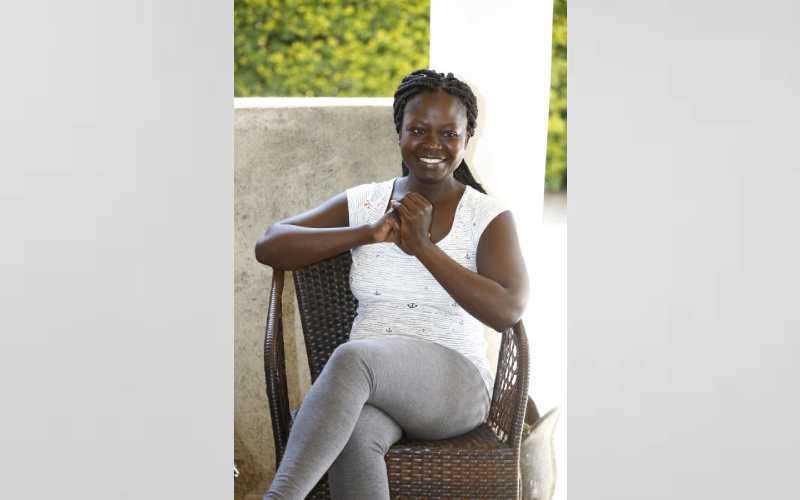
Sella Pirra during an interview with the Standard at her home in Soilo, Nakuru County, on September 25, 2020. She underwent the Caeserain section for her three children. [Kipsang Joseph,Standard]
Kenyan mothers are now more likely to be delivered via caesarean section (CS) compared to three years ago, according to data on payouts made to hospitals as compensation for birth-related services.
Since the introduction of Linda Mama programme, which offers free maternity and neonatal services, the number of women delivering in the hospital has soared.
Consequently, there has been an almost 10,000 per cent increase in payouts by the National Hospital Insurance Fund (NHIF) for CS deliveries during the same period.
In 2017, the NHIF paid Sh5.5 million for the surgical procedure before the figure shot up to Sh486 million this year. The amount, however, is just a fraction of the more than Sh4 billion paid for maternity-related services.
“Though the number of CS deliveries is increasing, the programme (Linda Mama) in general has benefited more women who would have otherwise not had access to hospital delivery services,” said NHIF Chief Executive Officer Peter Kamunyo.
But there is a huge difference in CS delivery costs, with public hospitals charging anywhere between Sh50,000 and Sh100,000 while costs in private facilities can be more than Sh300,000.
Data from a private insurance firm show that 53 per cent of deliveries in private hospitals are C-sections, which account for nearly 75 per cent of maternity claims. In some hospitals, figures of up to 80 per cent of women delivering through C-section at any given time have been reported.
Since 2017, the insurer has paid out Sh200 million for CS deliveries, which is more than double the amount paid for normal deliveries.
Aga Khan University Hospital Obstetrics and Gynaecology chair Marleen Temmerman said the number of unnecessary C-sections being conducted in Kenya and across the world is on the rise.
Prof Temmerman said the surgical procedure had become a cash cow for some private hospitals. She also accused doctors of complicity, noting that some were reluctant to respond to deliveries at night, opting instead to schedule patients during their preferred hours.
Complications
Temmerman, who is the director of the Centre of Excellence in Women and Child Health, noted that there were doctors who prefer surgery for fear of being blamed in case a woman develops complications and dies during natural birth.
“At least 60 per cent of the maternity budget was used for C-sections after NHIF announced it would cater for bills. Were these operations necessary?
“Why do some hospitals ask clients about the type of medical cover they have before being attended to? Some encourage C-sections unnecessarily,” she said.
Temmerman said doctors should only perform the procedure for medical reasons, for example, when a woman has a high-risk pregnancy.
She noted that while some hospitals performed 50-90 per cent of surgeries, others conducted fewer than two per cent of the procedure due to lack of skilled human resources and equipment.
These factors, she added, counted towards the high cost of C-section deliveries.
Between 2017 and 2018, there were 28,454 women out of 321,113 who delivered through CS under the Linda Mama programme.
Between 2019 and 2020, the number of C-section deliveries rose to 64,523 out of a total of 724,463 deliveries.
Women in urban areas were also more likely to opt for surgery. Last year, 25 per cent of pregnant women in Nairobi had C-section deliveries compared to five per cent in Mandera.
The NHIF paid Sh82 million and Sh211 million for C-section and normal deliveries, respectively, to hospitals in Nairobi. In Mandera, the fund paid Sh65,000 and Sh14 million for C-section and normal deliveries, respectively.
According to Temmerman, only two hospitals offer C-section deliveries in Mandera.
The World Health Organisation ranks CS as the most common surgery in the world and recommends a rate of 10 per cent or lower. It states that higher numbers are not associated with improved maternity and newborn death rates.
Credit: Source link